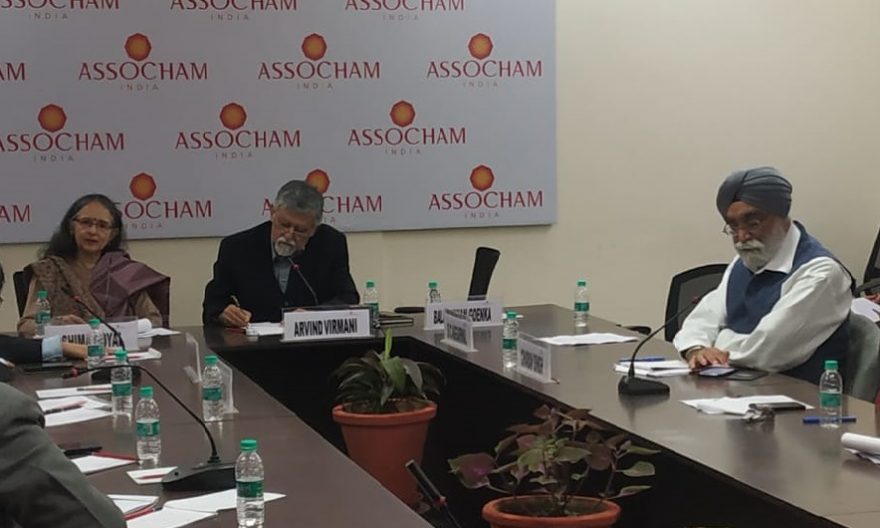
Drastic monetary and fiscal measures will be needed to revive the Indian economy that has just recorded its lowest growth rate in six years for the three months ended September 2019, said a group of economists on Tuesday. The real repo rate is still very high and there is room for another 1 percentage point cut, the members of the Shadow Monetary Policy Committee set up by EGROW Foundation, a Noida-based think tank. The committee recommended that RBI should consider stopping inflation targeting till the economy recovers from its current crisis.
An interest subvention for MSMEs and a mechanism to ensure better transmission of rate cuts were some of the other recommendations of the committee.
“The transmission mechanism in India is slower compared to the developed economies. That is no reason to argue against further rate cuts,” said Arvind Virmani, chairman of EGROW Foundation who chaired the shadow MPC meeting.
ALSO READ: India growth story: Here’s why recession fears are misplaced
The economy grew at 4.5% in the second quarter of the current financial year (2019-20), compared with 7% in the comparable period last year. It had reported a disappointing 5% growth in the previous quarter. The annual inflation measured in terms of consumer price index had risen to 4.62% in September, breaching the RBI’s comfort level of 4% for the first time in the five quarters.
“The current situation is unlike the 2008 crisis when the picture was a clear one. The real repo rate is down to 1% and should be brought down to 0%,” Virmani said, recommending a 25 basis point cut in the benchmark repo rate.
“The Reserve Bank should shift from forex swaps to open market operations to inject durable liquidity into the system,” said Ashima Goyal, member of Prime Minister’s Economic Advisory Council and professor at Indira Gandhi Institute of Development Research.
“Assurance that durable liquidity will stay in surplus will push banks to lend more and cut rates, she said while recommending a 40 basis point cut in repo rate. She also suggested that banks should be allowed to offer differentiated rates on deposits.
ALSO READ: India story: Right policies for an angry young population
Indranil Sengupta, Chief Economist at Bank of America Merrill Lynch, said GDP growth will fall to 5.1% in the current fiscal due to high real lending rates. He said the RBI MPC may look through the high CPI inflation as it is driven by onion price spikes and base effects.
“One way to fast track real lending rate cuts, the government can offer 2% subvention on loans to micro and small enterprises,” Sengupta said, recommending a 25 bps cut in repo rate.
“The continuing stress in the NBFCs may find it difficult to revive the consumption demand meaningfully,” said Upasna Bhardwaj, Chief Economist, Kotak Mahindra Bank. Bhardwaj said the MPC may assign higher weightage to addressing growth and deliver a 25bps of rate cut this week, adding that there is room for another cut by the same margin after the December action.
“The Real Repo Rate is very high if WPI is considered instead of CPI. To convey a strong signal to the markets, an aggressive rate cut of 50 bps in December and another in February 2020 should be considered,” said Charan Singh, CEO, EGROW Foundation. He recommended strong government intervention in the economy considering the social implications of a continued slowdown.
Speaking at the occasion, Assocham president Balkrishan Goenka said the interest rates will remain high as the government is still raising money at 6.8% through G-Secs. He also called for better transmission of the 135 bps cut already effected by the central bank.
